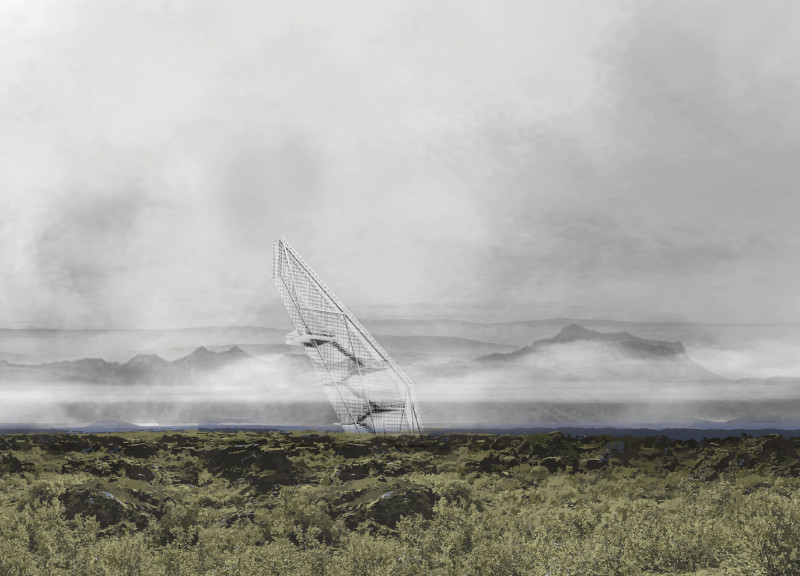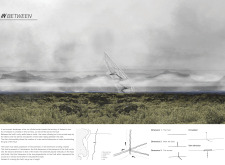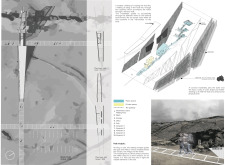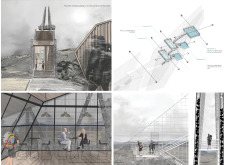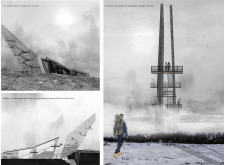5 key facts about this project
The design project located in Iceland is closely tied to the landscape defined by a significant fault line. This natural feature serves as a central element that shapes the layout and experience within the space. The aim is to create an “in-between” area that merges with the surroundings. The result is a thoughtful relationship between the built environment and the terrain.
Integration of the Fault
The fault is more than just a division in the land; it drives the design's concept. Visitors are invited to explore this unique formation, which fosters a quiet environment conducive to reflection. Shadows and light play within the rocky confines of the fault, while the caves provide an inviting atmosphere where people can experience silence and calm.
Verticality and the Tower
A notable tower stands within the landscape, emphasizing the fault's characteristics. Its vertical position calls attention to the upward movement, guiding visitors to notice the space from above. The tower acts as a clear marker against the backdrop of the existing topography. It engages individuals with the natural features surrounding it, reinforcing the connection between the architecture and the land.
Spatial Organization
The layout carefully considers how visitors will navigate the space. Key areas include an information stand, waiting areas, toilets, storage, offices, a café, and various viewing points. Each function is placed with attention to accessibility and interaction, enabling guests to engage with both the architecture and the landscape. The arrangement fosters a meaningful exploration of the site.
Materiality and Sensory Experience
While specific materials are not mentioned in detail, there is an emphasis on unity in color and shape. The goal is to create a cohesive experience that aligns with the natural environment. This approach enhances visitors' sensory engagement, encouraging them to connect with the landscape's distinct characteristics.
From the top of the tower, panoramic views reveal the features of the surrounding area, framing the fault as a key component that invites further exploration.


